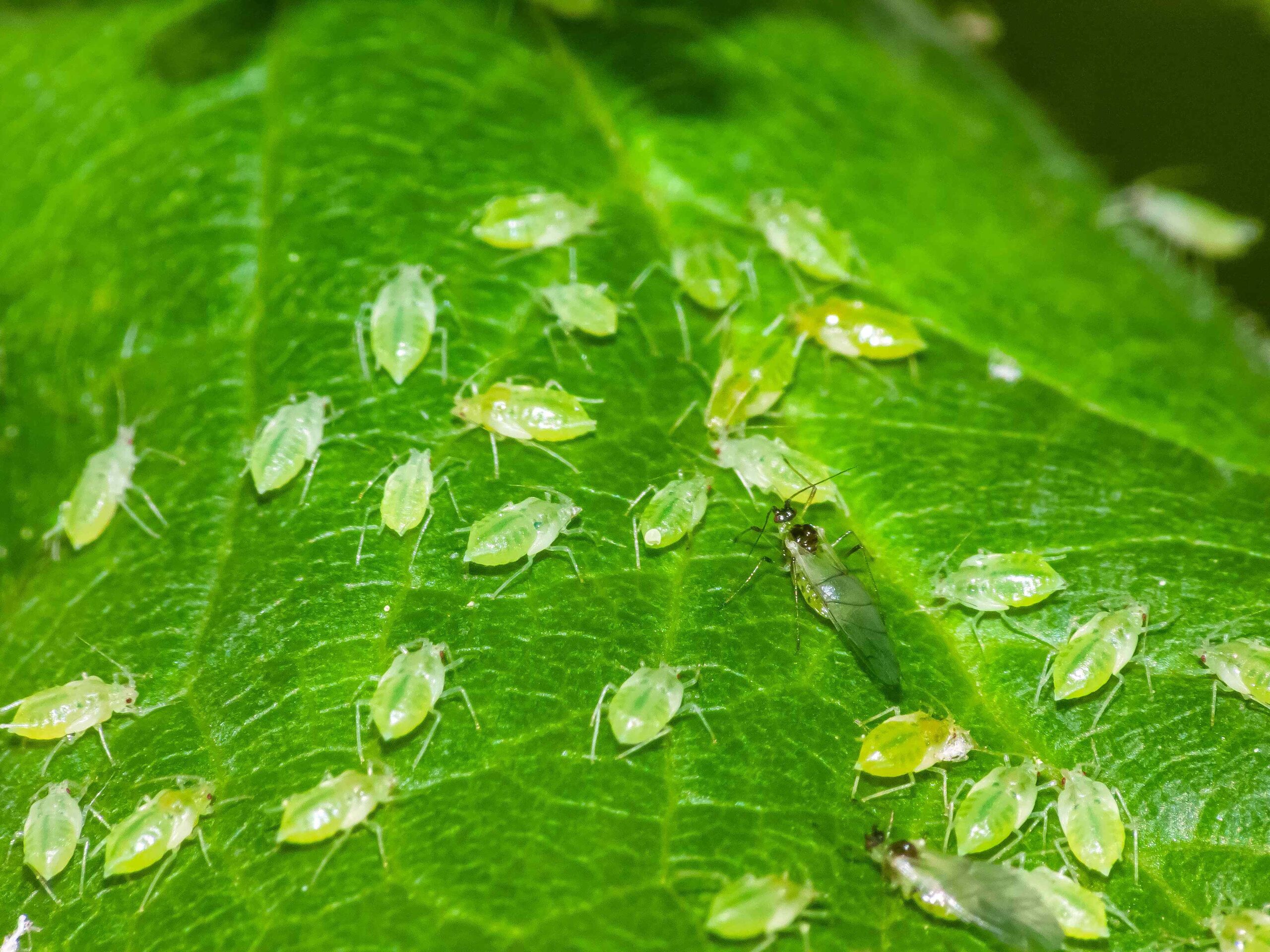When it comes to growing your own vegetables, aphids are a threat you’re always on the lookout for. Plants such as broccoli, cabbage, cucumbers, peppers, and a few others are more susceptible to an aphid invasion thanks to their high nitrogen content. But, with the help of a few companion plants scattered in the mix, especially plants that aphids hate, you should be able to maintain an aphid-free garden!
We were curious about which plants aphids hate the most, which is why we spoke to several gardening experts for the top eight aphid-repelling plants to plant in the mix of your crop.
Meet the Expert
- Rafia Khan is an Entomologist at Texas A&M AgriLife.
- Ward Dilmore is the Founder & Head Landscape Designer at Petrus, a Luxury Estate Landscaping Company in Menlo Park, CA.
Marigolds
Lex20 / iStock / Getty Images
According to Rafia Khan, an entomologist at Texas A&M AgriLife, container-friendly marigolds release a strong scent that masks the scent of host plants nearby that aphids flock to.
“Additionally, marigolds attract beneficial insects like lady beetles and lacewings that prey on aphids. Marigolds are specifically effective to manage aphids near the host plants of cabbage and roses,” he says.
To grow and care for marigolds, you will need to make sure the plant is consistently watered and receives at least six hours of direct sunlight every day. Marigolds are really versatile and can grow in a range of USDA zones 2a-11b.
Want more gardening tips? Sign up for our free gardening newsletter for our best growing tips, troubleshooting hacks, and more!
Chives
Credit:
Ana Luiza Serpa / Getty Images
Like marigolds, both of our experts say chives produce an onion scent that deters aphids from your garden.
Khan says, “The volatile sulfur compounds act as a natural insecticide and confuse aphids seeking suitable hosts. Interplanting chives with roses, lettuce, or carrots can reduce aphid pressure while providing an edible herb for culinary use.”
When growing chives to use as an aphid repellent, choose either a well-draining container or well-draining soil if you’re planting in the ground. Chives thrive best in USDA zones 3-9 and need at least six to eight hours of direct sunlight every day and moist soil.
Lavender
happykamill/Getty
Lavender is another scent-producing plant our experts say keeps aphids and other insects out of your garden.
“This plant can also attract ladybugs and butterflies to your garden as an added bonus,” says Ward Dilmore, founder & Head Landscape Designer at Petrus.
Lavender is an excellent plant to grow as an aphid repellent that you can plant in containers before bringing it inside for a variety of uses. Lavender grows best in USDA zones 5-9, but with six to eight hours of daily direct sunlight and enough water to keep the soil moist, you should have no problem seeing your herb flourish.
Dill
Nicholas Kostin / Getty Images
“Dill has feathery foliage and a scent that can repel aphids while attracting predatory insects like hoverflies and lacewings,” Wilmore says. “Attracting these beneficial insects is the best natural way to control the aphid population.”
And while you’re using this plant to keep the unwanted aphids at bay, you’re also getting a useful herb to bring into your kitchen.
Dill is very easy to grow in containers with simple care needs that grow best in zones 2-11. Just make sure your dill plant gets at least six to eight hours of direct sunlight and keeps a moist soil.
Khan says to use dill for companion planting, plant this herb near leafy greens or cucumbers, but remember to give the plant enough space to prevent overcrowding.
Mint
Getty Images/Kinga Krzeminska
Even we humans know that mint has a strong, signature aroma, and according to Khan, that’s what works best for steering aphids away from your garden.
“The essential oils released from mint leaves confuse insects’ olfactory senses, making it difficult for them to find host plants. However, mint spreads aggressively, so it should be planted in containers or controlled areas to prevent overgrowth.”
Mint grows best in zones 3-9, though the plant can tolerate warmer climates if cared for properly. To ensure your mint plant thrives, place it in a spot where it receives a mix of full sun and partial shade (just around 4 hours of sunlight will do), and keep the soil consistently moist.
Catnip
Zen Rial / Getty Image
Dilmore says the rootbeer-like scent from catnip plants may attract cats to your garden, but it’ll keep the aphids out. This plant can be paired with squash or collards, which Khan says aphids typically like to keep them away from your crops.
Like mint, catnip flourishes in USDA zones 3-9, but needs six to eight hours of full sun. You’ll also need to keep the soil moist and well-draining, without it becoming waterlogged, for catnip to grow to its fullest.
Garlic
Getty Images/blinow61
There’s no better pungent plant to put in your garden that aphids despise other than garlic. According to Dilmore, garlic’s aroma is excellent for repelling aphids and is great to plant near roses or vegetables that aphids are drawn to.
While garlic grows best in zones 3-5, you can still grow the bulbs in containers and place them in a spot that gets six to eight hours of direct sunlight. For watering, garlic loves deep, frequent moisture, but not so much that the soil becomes soggy.
Basil
According to Kahn, basil produces several chemicals and essential oils like estragole, citronellal, limonene, nerolidol, and more that aphids don’t like.
“Host plants such as peppers and beans can be protected from aphids with a companion planting with basil,” he says.
Like other herbs, you have the option to plant basil in containers or the ground. Basil thrives in warm conditions, which is why it flourishes in zones 10-11. If you try growing basil, make sure your plant receives six to eight hours of direct sunlight and has moist soil.










